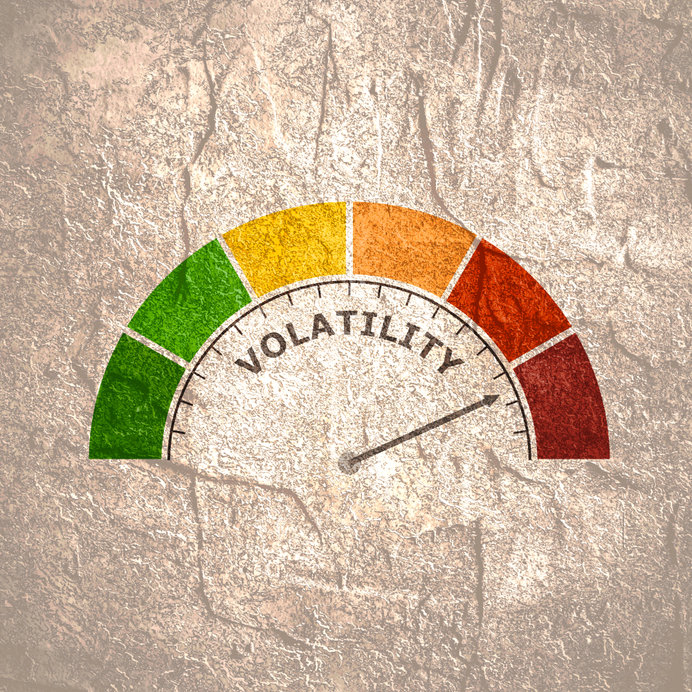Sometimes Nothing Is the Best Thing To Do
Stocks have always been the greatest source of wealth creation for investors. The downside of it, however, is volatility.
Conventional wisdom says to balance a stock portfolio with bonds. Though they do not offer the growth potential of stocks, they make up for that in their stability.
That conventional wisdom is being challenged by today’s markets in which both stock and bonds have turned south. In addition, the rest of 2022 is shaping up to be the year of volatility. So, what do you do in these uncharted waters?
Major Indexes Drop
The S&P 500 is down about 20 percent so far this year. The Dow has dropped over 16 percent in 2022 and Nasdaq dropped 29 percent before a .2 percent uptick Thursday.
“The main takeaway for investors is to brace for extended volatility,” Greg Bassuk, CEO at AXS Investments told CNBC Thursday. “We believe that volatility is going to be the investor narrative for the balance of Q2, and frankly, you know, for the balance of 2022.”
Don’t Panic
In the 1970s, a science fiction book called The Hitchhiker’s Guide To The Galaxy was published. The cover of the guide was emblazoned with the words “Don’t Panic.” What was good advice for space travelers is also good advice for investors.
The temptation in a down market is to move to cash and wait for the markets to bounce back.
Thereby, getting your money back in the market just in time to see it rise. That is a concept called market timing — a concept Forbes has labeled a strategy “for suckers.”
“Our research shows that the cost of waiting for the perfect moment to invest typically exceeds the benefit of even perfect timing,” according to the Schwab Center for Financial Research. “And because timing the market perfectly is nearly impossible, the best strategy for most is not to try to market-time at all.”
Review Your Plans
As a result, many advisors recommend doing nothing. However, a market downturn is a good time to take care of the basics.
There is nothing more basic than having an emergency fund. If you do not have one — start one.
Most advisors recommend having enough in your emergency fund to cover three to six months of living expenses.
Once your emergency fund is set, take a look at how you are investing.
Most financial planners recommend dollar-cost-averaging as the best long-term strategy for investing. It involves putting a set amount in investments on a regular basis. For example, $100 a month in a mutual fund. That is how 401(k) retirement plans invest your money.
Can Corporate Cash Save Stock Market
Corporations are flush with over $7.1 trillion in cash, according to a note authored last week by Bank of America. As a result, the bank suggested companies use those funds to bolster the stock market by issuing dividends and offering buybacks to investors.
“The best hope for 2022 bulls lies in the ability of investors to dislodge the $7.1 trillion in idle US corporate cash,” the bank claimed.
Corporate Debt Low
BofA maintains that corporate debt is the lowest it has been in decades. At the same time, dividends and stock buybacks are the lowest they have been in 12 years, writes the bank.
That combination of low debt and excess cash presents an opportunity for businesses to “calm nervous shareholders” by putting money in investors’ pockets.
How and Why
Businesses often hoard cash in uncertain times. Think pandemic here.
However, with many seeing Covid in the rearview mirror, large corporations are beginning to loosen the purse strings.
“The Covid clouds are clearing, and optimism is starting to come back in,” Lori Calvasina, head of U.S. equity strategy at RBC Capital Markets told the Wall Street Journal. “It’s a natural time for companies to be thinking about using [those strategies] again.”
The Journal cites S&P Dow Jones records that show dividends have increased $20.3 billion on an annualized basis this year. That is the largest increase in 10 years
Consumer Prices – the Long View
You don’t have to be an economist to know inflation when you see it. All you need to do is buy groceries, put gas in your car, or check your credit card balance.
If you have done any of those things lately, you have seen prices rise. The question is, will prices increases continue, and for how long?
Debt Rising
American household debt has increased by $1.7 trillion — more than the amount before the pandemic. In addition, that number is rising.
The first quarter of this year saw household debt rise by $266 billion, according to a report by the Federal Reserve Bank of New York. That brings total debt by American families to $15.84 trillion.
Escalating mortgage rates and new car loans are responsible for the increase, according to the bank’s Quarterly Report on Household Debt and Credit.
“Mortage and auto loan balances rose $250 billion and $11 billion respectively, in the quarter” states the report, “although originations for both subsided from historically high levels in 2021.”
Forecast – Partly Cloudy
Origination of mortgages and car loans were down slightly in the first quarter, according to the NYFED report. However, balances were up. That is the result of inflation and rising interest rates.
Inflation and increasing interest rates are pushing household debt higher. As a result, economists are watching those twin terrors for signs of hope.
The Federal Open Market Committee (FOMC) sets monetary policy for the Federal Reserve. In its quarterly meeting this week, the committee projected inflation will average 4.3 percent for the rest of this year. Next year, FOMC is projecting a drop to 2.7 percent.
FOMC uses the Personal Consumer Expenditures (PCE) rate to measure inflation. The most often cited measure of inflation is the Consumer Price Index. Currently, the PCE is 6.6 percent. The CPI is 8.3 percent.
Read More:
- 15 Creative Ways to Save Money
- 5 Tips For Better Money Habits
- 5 Ways Procrastination Can Save You Money
Come back to what you love! Dollardig.com is the most reliable cash back site on the web. Just sign up, click, shop, and get full cash back!

Max K. Erkiletian began writing for newspapers while still in high school. He went on to become an award-winning journalist and co-founder of the print magazine Free Bird. He has written for a wide range of regional and national publications as well as many on-line publications. That has afforded him the opportunity to interview a variety of prominent figures from former Chairman of the Federal Reserve Bank Paul Volker to Blues musicians Muddy Waters and B. B. King. Max lives in Springfield, MO with his wife Karen and their cat – Pudge. He spends as much time as possible with his kids, grandchildren, and great-grandchildren.

Comments